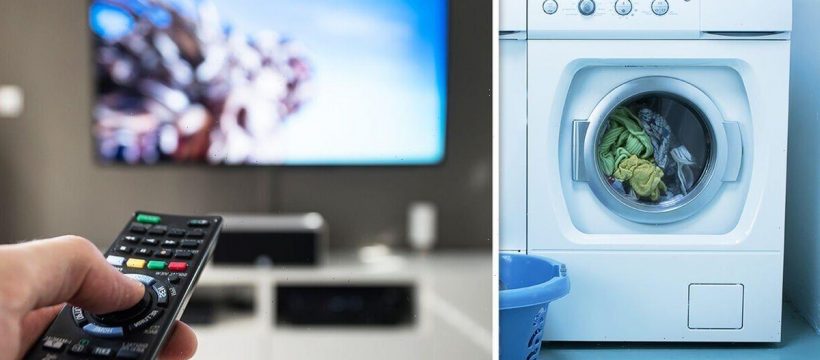Alice Beer reveals how you can save money on household bills
We use your sign-up to provide content in ways you’ve consented to and to improve our understanding of you. This may include adverts from us and 3rd parties based on our understanding. You can unsubscribe at any time. More info
According to new analysis, the cost of replacing everyday household goods is more expensive than two years ago. Consumers are having to pay more due to supply chain issues, research suggested. And while shoppers will want to bag a bargain, it is essential to buy reliable and durable electrical items.
Price comparison website PriceRunner carried out the analysis using its own data, as well as commissioning a survey to find out the prices of household appliances which have increased.
A washing machine typically costs £161 more than it did two years ago, while those replacing a cooker are going to be set back £334.
Anyone in need of a new television can expect to pay £49 more, while a tablet is now £74 more expensive on average.
Christine Gouldthorp, the consumer expert at PriceRunner, warned shoppers about rising prices and shared they may not return to normal this year.
She said: “Looking at everyday consumer products such as digital cameras, washing machines and cookers, some of these have doubled in price over the past two years.

“The average washing machine now costs 49 percent more than in April 2020.
“These increases are the result of a perfect storm; a mix of the UK’s HGV driver shortage, the shipping crisis in the UK and globally, with predictions that China’s recent lockdown will hit the UK supply chain even harder within the next few weeks.
“I would be surprised if these issues are resolved anytime soon, probably not even this year.”
Supply issues have also impacted the stock.
PriceRunner found 38.5 percent of kitchen sinks were out of stock on its website earlier this month, while 72 percent of doors were unable to be bought as well as 46.9 percent of windows.
Nearly a quarter (24.2 percent) of products in its TV category were also out of stock.
A YouGov survey of 2,000 people commissioned by PriceRunner meanwhile found nine in 10 (89 percent) people said they have been affected by higher energy prices, with around a quarter being greatly affected.
While six in 10 (59 percent) people surveyed said they have noticed their money generally does not stretch as far as it did.
Some 85 percent have spotted food prices increasing recently and 78 percent have seen fuel costs go up.

As for healthy and beauty prices, a quarter of those surveyed (25 percent) have noticed a price increase, while three in 10 (29 percent) have said toilet paper and nappy prices have risen.
In terms of furniture and home decorations, 13 percent have seen prices rise.
As for how households are combatting price rises, 45 percent are using less electricity, 35 percent are using less gas and 38 percent are cutting back on shopping.
Some 30 percent of households are also using less petrol.
Around three percent of participants said they have tried asking their employer for a pay rise in a bid to help with rising costs.
The average price increases between April 2020 and April 2022, according to PriceRunner:
– Digital cameras: 60 percent or £268
– Washing machines: 49 percent or £161
– Monitors: 39 percent or £96
– Cookers: 27 percentor £334
– Tablets: 22 percent or £74
– Tumble dryers: 19 percent or £72
– Toys: 18 percent or £3
– Vacuum cleaners: 11 percent or £18
– Coffee makers: 10 percent or £7
– Speakers: 9 percent or £15
– TVs: 8 percent or £49
– Headphones and gaming headsets: 8 percent or £3
Source: Read Full Article
